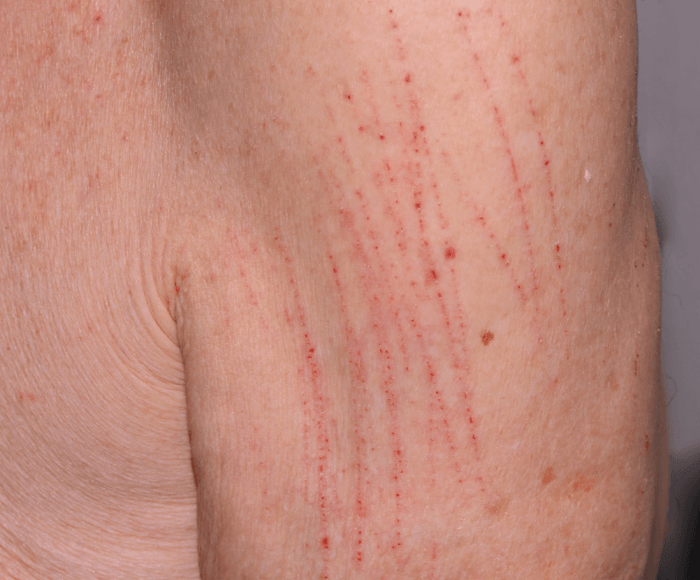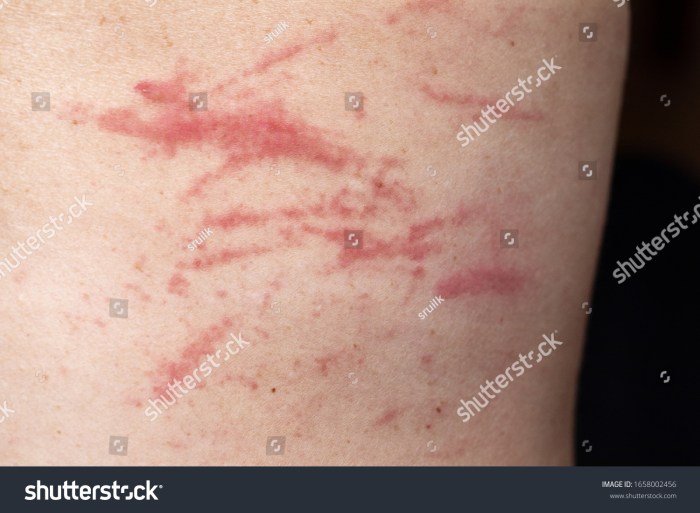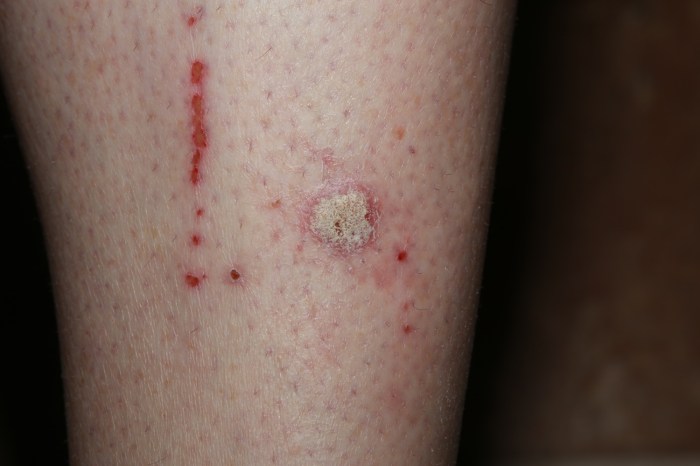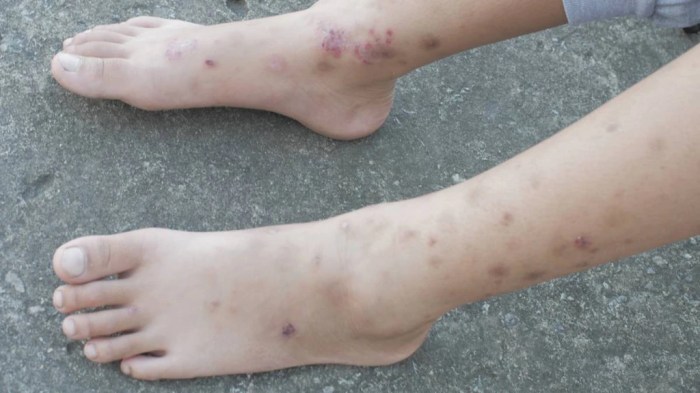Skin sore or abrasion produced by scratching or scraping – Skin sores or abrasions caused by scratching or scraping are a common ailment that can affect individuals of all ages. These injuries can range from minor superficial abrasions to more severe full-thickness abrasions that may require medical attention. Understanding the different types, symptoms, and treatment options for skin sores or abrasions is essential for effective management and prevention.
Abrasions occur when the outer layer of the skin is damaged, exposing the underlying tissues. Common causes include falls, accidents, and contact with rough surfaces. The severity of the abrasion depends on the depth of the wound and the amount of tissue damage.
Skin Sores or Abrasions

Skin sores or abrasions are common injuries that can result from various causes, such as friction, impact, or scraping. Understanding the types, symptoms, and treatment options for skin sores is crucial for proper wound care and prevention.
Types of Skin Sores or Abrasions
- Superficial Abrasions:These are minor abrasions that affect only the outermost layer of the skin (epidermis). They typically cause minimal pain and bleeding.
- Partial-Thickness Abrasions:These abrasions extend deeper into the skin, affecting both the epidermis and the dermis (the layer beneath the epidermis). They can cause moderate pain, bleeding, and scarring.
- Full-Thickness Abrasions:These are the most severe type of abrasions, penetrating through all layers of the skin and into the subcutaneous tissue. They cause significant pain, bleeding, and require immediate medical attention.
Symptoms of Skin Sores or Abrasions
The symptoms of skin sores or abrasions can vary depending on the type and severity of the injury. Common symptoms include:
- Pain
- Bleeding
- Redness
- Swelling
- Blistering
Treatment of Skin Sores or Abrasions
The treatment for skin sores or abrasions depends on the type and severity of the injury. General steps involved in treating abrasions include:
- Cleaning:Gently clean the wound with soap and water or a saline solution to remove dirt and debris.
- Disinfecting:Apply an antiseptic to the wound to prevent infection.
- Protecting:Cover the wound with a bandage or dressing to protect it from further injury and promote healing.
Prevention of Skin Sores or Abrasions, Skin sore or abrasion produced by scratching or scraping
Preventing skin sores or abrasions is essential, especially for high-risk individuals. Practical tips for preventing abrasions include:
- Wearing protective clothing, such as gloves and long sleeves.
- Avoiding activities that could cause injury, such as contact sports or working with sharp objects.
- Using proper safety equipment when engaging in hazardous activities.
Top FAQs: Skin Sore Or Abrasion Produced By Scratching Or Scraping
What are the signs of an infected skin sore or abrasion?
Signs of infection include redness, swelling, pain, drainage, and fever.
How long does it take for a skin sore or abrasion to heal?
Healing time varies depending on the severity of the abrasion. Superficial abrasions typically heal within a few days, while deeper abrasions may take several weeks or months.
Can I treat a skin sore or abrasion at home?
Minor superficial abrasions can be treated at home with proper cleaning, disinfection, and protection. Deeper abrasions or those that show signs of infection should be evaluated by a healthcare professional.


